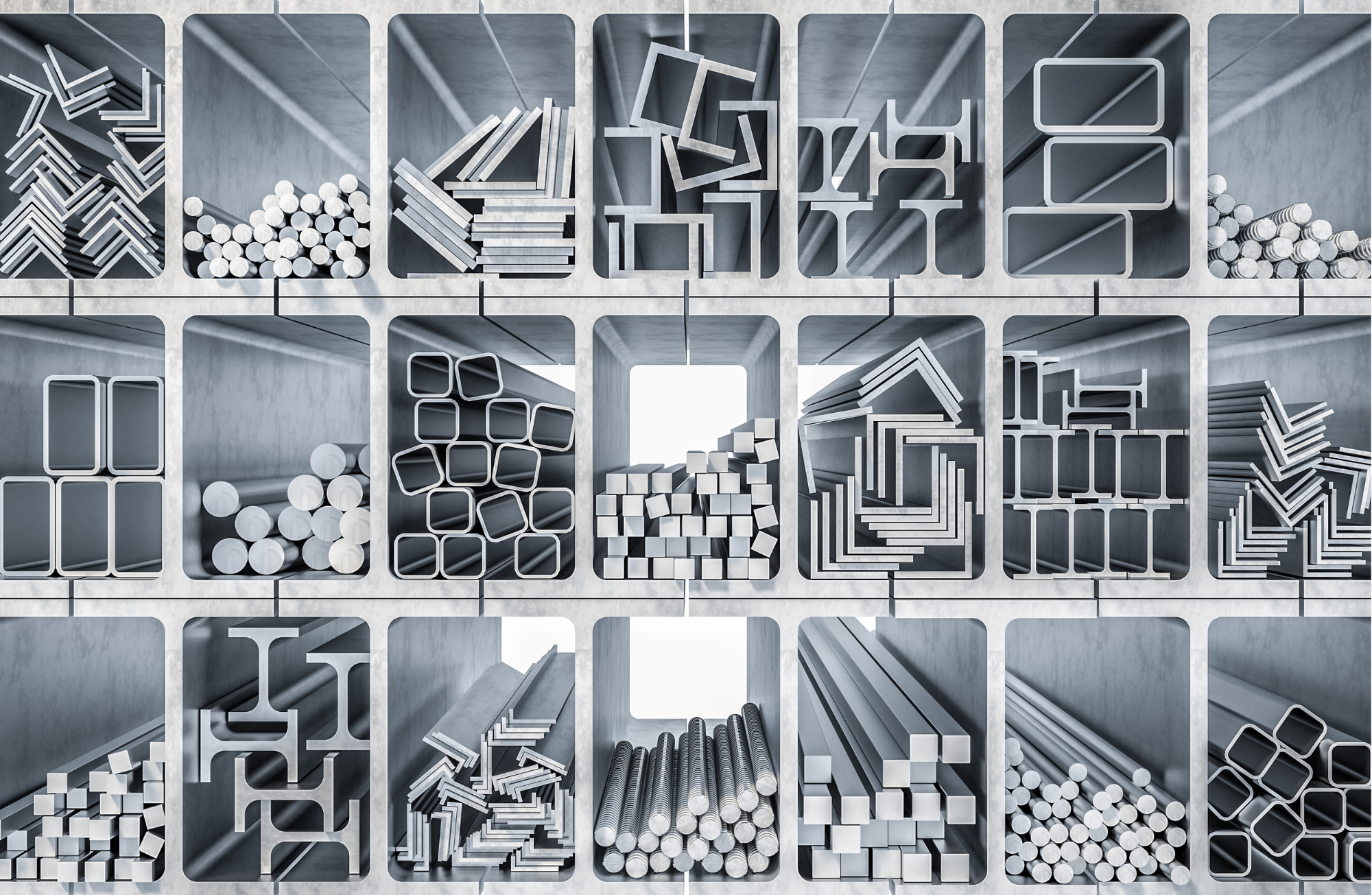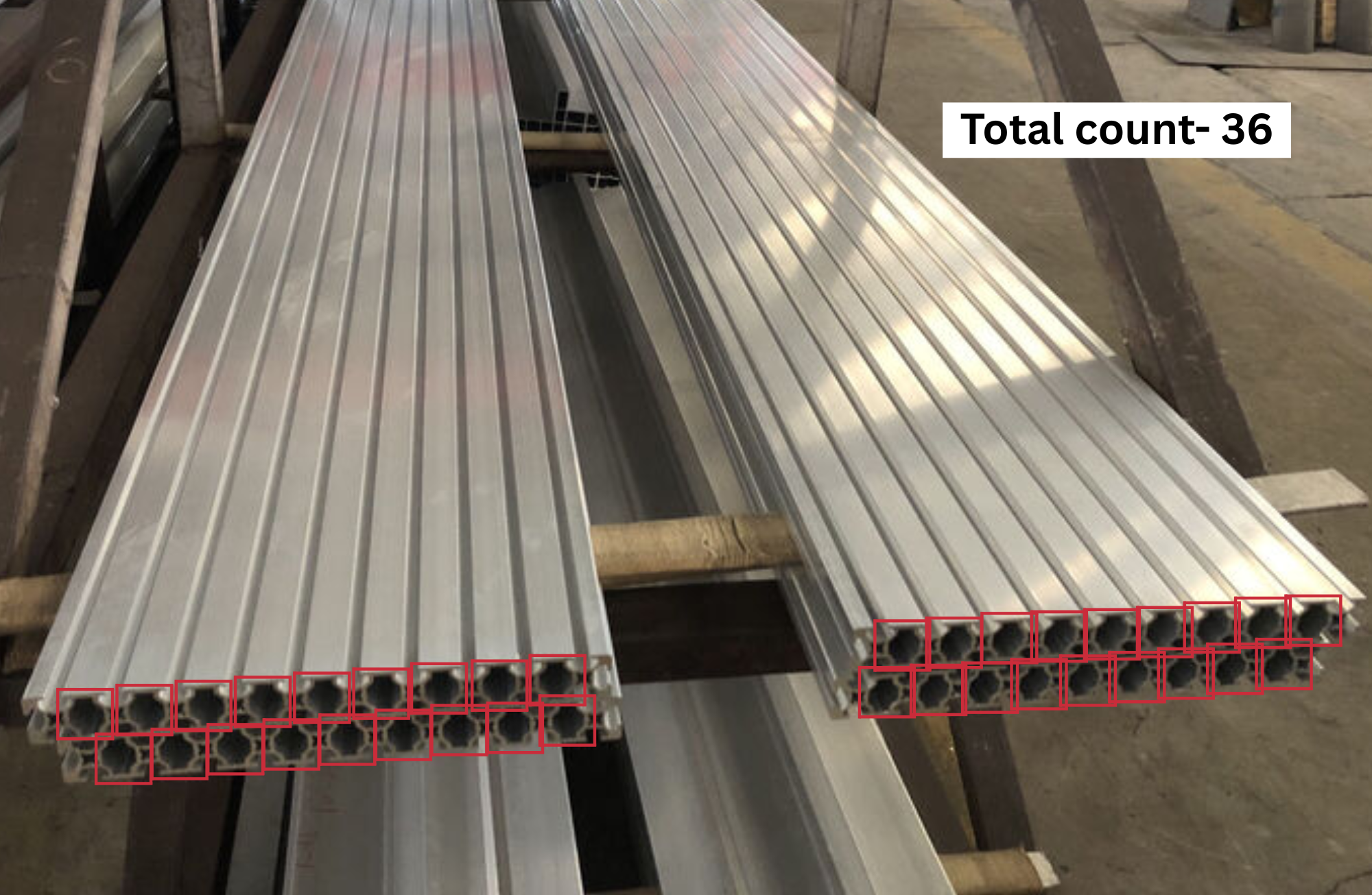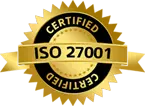Precise Counting of Aluminium Extrusion Profile with Machine Vision AI
Published on: May 06, 2025

Written by: Content team, Intelgic
Precise Counting of Aluminium Extrusion Profile with Machine Vision AI
In high-volume manufacturing and warehouse operations, accurate inventory control isn't just a task—it's a competitive advantage. Among the most time-consuming and error-prone challenges is the counting of aluminium extrusion profiles, which are essential components across sectors like construction, automotive, aerospace, and furniture manufacturing.
Due to their long, reflective surfaces and tightly packed arrangements, these profiles are notoriously difficult to count with manual labor or outdated vision systems. However, with the rise of AI-powered Machine Vision, manufacturers and warehouse managers can now automate this complex process—achieving unmatched speed, precision, and operational consistency.
The Complexity of Counting Aluminium Extrusion Profiles
At first glance, counting aluminium extrusion profiles may appear to be a straightforward warehouse task. However, the real-world complexity of this process poses significant challenges that impact inventory accuracy and operational efficiency. Several key factors contribute to the difficulty:
1. High Reflectivity
Aluminium’s polished and reflective surfaces create intense glare and hotspots under standard warehouse lighting, which can obscure profile edges in images. This makes it difficult for both human inspectors and traditional vision systems to capture clean, usable visuals for accurate counting.
2. Uniform Appearance and Tight Stacking
Profiles are commonly stacked in uniform, tightly packed bundles, often with very little space or contrast between individual pieces. This lack of visual separation makes it challenging to identify and distinguish each profile, especially when viewed from overhead or side angles.
3. Inconsistent Orientation
Not all profiles are perfectly aligned. Some may be tilted, twisted, partially rotated, or overlapping within a bundle. These irregular orientations introduce variability in appearance, which can confuse both manual counters and simplistic image processing algorithms.
4. High Throughput Requirements
Warehouses frequently handle thousands of profiles per shift. Any counting method must keep pace with the flow of goods without causing bottlenecks. Manual or semi-automated solutions are often too slow or inconsistent to meet this demand.
5. Variability in Shape and Size
Aluminium profiles come in a wide range of cross-sectional shapes (e.g., T-sections, U-channels, hollow tubes, custom extrusions) and lengths. This geometric diversity requires advanced detection algorithms capable of distinguishing not only between individual items but also among different profile types.

How Machine Vision AI Overcomes These Challenges
To meet the demands of modern Manufacturing and warehouses, machine vision systems now integrate AI algorithms, area scan cameras, and strobe lighting. This trio of technologies enables real-time, automated counting with remarkable precision.
Area Scan Cameras: Capturing Details in Every Frame
Area scan cameras deliver high-resolution, full-field images in a single shot, making them ideal for inspecting and counting stationary or slowly moving items. Positioned strategically in the warehouse, these cameras generate crisp, detailed images that clearly define the edges and shapes of each aluminium profile.
Key advantages:
- Detects individual profiles, even when overlapping or misaligned.
- Captures fine edges critical for AI recognition.
- Supports zoomed-in inspection without resolution loss.
Strobe Lighting: Minimizing Glare for Clearer Imaging
Strobe lights emit quick bursts of intense light synchronized with the camera’s shutter, helping “freeze” motion and eliminate motion blur. They also counteract glare from aluminium surfaces, ensuring consistent lighting conditions regardless of ambient changes.
Benefits include:
- Sharp image capture during movement.
- Controlled illumination, reducing reflections and shadows.
- High performance even in dusty or poorly lit environments.
The Intelligence Behind the Images: AI-Driven Analysis
Once images are captured, AI software performs real-time analysis using computer vision techniques and deep learning models:
- Image Preprocessing: Enhances image contrast, suppresses background noise, and isolates profiles.
- Object Detection: Identifies and differentiates each profile using trained AI models.
- Counting and Integration: Outputs an accurate count, which can be displayed, logged, or sent to ERP/WMS systems.

The AI-Powered Aluminium Profile Counting Workflow
When powered by cutting-edge solutions like Intelgic’s Machine Vision platform, the process of counting aluminium extrusion profiles becomes a seamless and intelligent operation. Here's how this revolutionary system works from start to finish:
1. Intelligent Configuration:
The system begins with the strategic installation of high-resolution area scan cameras and synchronized strobe lighting at key inspection points. These are finely calibrated to match the specific dimensions, lighting conditions, and reflective nature of aluminium profiles—ensuring optimal image capture from day one.
2. Precision Trigger and Capture:
As extrusion bundles move into the detection zone—whether on a conveyor, cart, or warehouse bay—the system is automatically triggered. Within milliseconds, the camera-strobe combo freezes the motion and captures a razor-sharp, high-contrast image of the stack, eliminating motion blur and glare.
3. Real-Time AI Analysis and Counting:
The captured image is instantly analyzed by Intelgic’s powerful Live Vision AI . Using deep learning algorithms trained on thousands of profile variations, the system identifies, separates, and counts each individual profile—even when stacked tightly, misaligned, or partially obscured. The results are displayed live on the operator’s interface.
4. Seamless Data Integration:
The final count, along with any associated data, is pushed directly to your ERP, WMS, or custom software platforms. This integration enables real-time quality control, automated sorting, discrepancy alerts, and digital audit trails—bringing true intelligence to your inventory workflow.
Versatility Across Industries
While the technology is optimized for counting aluminium extrusion profiles, its adaptability makes it a valuable asset across a wide range of industries where precision, speed, and inventory accuracy are non-negotiable.
Construction
From window frames to curtain walls and structural channels, accurately tracking aluminium components ensures smooth site deliveries and reduces project delays. AI-powered vision systems bring unmatched precision to prefab and on-site inventory management.
Automotive
Extruded parts like chassis supports, bumpers, and tubing require exact counts to maintain lean manufacturing. Machine vision eliminates errors, accelerates sorting, and integrates directly with automotive assembly line systems for real-time updates.
Aerospace
When it comes to lightweight, custom-profile components, precision is paramount. AI vision systems provide high-resolution detection and classification to support aerospace-grade inventory tracking and compliance.
Furniture Manufacturing
Manage various extrusion-based components—like frames, trims, and supports—at every production stage. Automated counting prevents material shortages, optimizes workflow, and ensures a seamless manufacturing cycle.
Metal Distribution & Warehousing
Streamline order verification and shipment processing. Whether handling bulk aluminium profiles or mixed-material pallets, AI-driven counting guarantees fulfillment accuracy and minimizes costly rework.
Key Benefits of Machine Vision AI in Aluminum Extrusion Profile Counting
Organizations adopting AI-based machine vision gain:
- Enhanced Accuracy: Reduces errors from glare, occlusion, or manual oversight.
- Increased Speed: Processes hundreds of profiles per minute without halting operations.
- Consistent Performance: Operates reliably across shifts and conditions.
- Cost Efficiency: Reduces labor costs and rework.
- Data Transparency: Enables logging and audit trails for compliance and traceability.
- Scalability: Expandable across facilities and compatible with remote or cloud-based systems.
Intelgic: Pioneering the Future of Machine Vision AI Solutions
Intelgic’s AI vision systems are specifically engineered for industrial environments where precision and automation are mission-critical. Intelgic’s aluminium profile counting solution blends cutting-edge deep learning models, high-resolution area scan cameras, and intelligent lighting control to deliver fast and dependable performance.
With easy integration, customizable workflows, and robust industrial-grade hardware, Intelgic’s solution is designed to scale with your operations—whether you manage a single warehouse or a global logistics network.
Eliminate manual counting errors and optimize your inventory process with Intelgic’s Machine Vision AI platform—ushering in the future of industrial automation for your operations.

